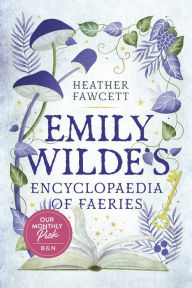Drawn to Fairy Stories: A Guest Post by Heather Fawcett
I find the question of why fairy stories are so popular fascinating because underlying it is actually two questions: One, why are we—humans in general—drawn to fairy stories? And, two, why are fairy stories, and fairies themselves, so popular now?
The answer to the second question, I think, is likely mundane: fairies are popular now because the fantasy genre, like other genres and industries, has trend cycles. Sometimes it’s vampires or zombies; sometimes dragons; sometimes it’s all-powerful dark mages who can only be overcome by small creatures with hairy feet. That said, fairies have been “in” for a long time, long before Bookstagram or TikTok: Holly Black’s Tithe, which I think represents the first “modern” example of the fairy trend in publishing (it’s even subtitled “A Modern Fairy Tale”), came out in 2002. Viewed through that lens, fairies might be the fantasy trend with the greatest staying power—which I think would suit their vanity quite well!
To name something is to gain power over it, both in fairy stories and in life, even if that power is small.
The first question, in my opinion, is more interesting, because it gets at something foundational to what makes us human. People have been telling stories about fairies, ghosts, dragons, and other supernatural beings since stories have existed. I think we’re drawn to those stories because they feel like a way for us to understand—or merely give a name to—that which is inexplicable in our lives. To name something is to gain power over it, both in fairy stories and in life, even if that power is small. And even if we know more about the world today than, say, a medieval farmer trying to figure out why their crops have failed, still there’s so much that defies understanding, from scientific mysteries to hatred and prejudice to existential questions about our lives. I think stories about fairies—which is to say, stories about magic—give us a way to grapple with these questions, whether it’s by expanding our imagination and sense of the possible or by offering us the comfort of allegories for the mysteries and struggles we face every day.
“Fairy tales are more than true: not because they tell us that dragons exist, but because they tell us that dragons can be beaten.” –Neil Gaiman, Coraline
One of my favourite quotes from Neil Gaiman (from one of my favourite books, Coraline) is as follows: “Fairy tales are more than true: not because they tell us that dragons exist, but because they tell us that dragons can be beaten.” Perhaps, in stories about fairies, we also confront another apparent impossibility: that dragons can be befriended.
For me personally, I’ve always said that fairies are my favourite mythical creature. (Yes, I like to rank my favourite mythical creatures; dragons and hobbits are second and third, respectively.) I like fairies because they’re contradictory: both monstrous and mundane; frightening and vengeful yet also prone to silly whimsy. Which is to say, fairies are fun. And that’s just something that we all need, and another essential quality of storytelling that cannot be overvalued.

